10 Must-Visit UNESCO World Heritage Sites in Croatia
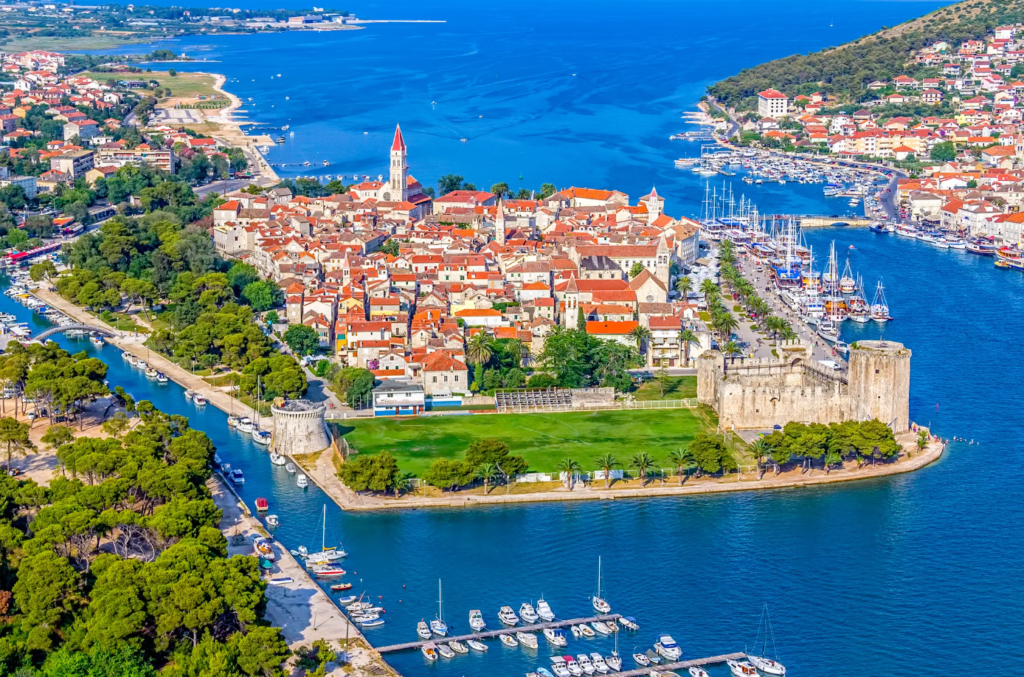
Croatia’s rich cultural and historical legacy has earned it numerous UNESCO World Heritage sites. Croatia has significantly contributed to the global cultural, historical, natural, tangible, and intangible heritage. From ancient Roman ruins to stunning natural landscapes, this small European country offers a diverse range of attractions for travelers seeking a unique and enriching experience. These cherished treasures beautifully represent the diverse tapestry of Croatian culture, spirit, and nature. In this article, we delve into the depths of Croatia’s heritage and present 10 must-visit UNESCO World Heritage sites that will leave visitors awe-inspired and eager to explore.
How many UNESCO sites are there in Croatia?
Croatia is home to numerous remarkable landmarks and sites that have earned recognition and protection from the United Nations Educational, Scientific, and Cultural Organization (UNESCO).
With its diverse array of UNESCO World Heritage Sites, Croatia is a testament to the country’s exceptional historical and natural significance.
Croatia has an impressive total of ten UNESCO World Heritage Sites.
These sites showcase the nation’s unique blend of historical, architectural, and natural wonders, captivating visitors from around the globe.
UNESCO World Heritage Sites in Croatia are:
- Old City of Dubrovnik
- Historical Complex of Split with the Diocletians Palace
- Plitvice Lakes National Park
- Episcopal Complex of the Euphrasian Basilica in the Historic Centre of Poreč
- Historical City of Trogir
- The Cathedral of St. James in Šibenik
- Stari Grad Plain
- The Venetian Works of Defence between the 16th and 17th Centuries
- Stećci Medieval Tombstones Graveyards
- Ancient and Primeval Beech Forests of the Carpathians and Other Regions of Europe
It is important to note that the status of UNESCO World Heritage Sites may change over time.
New sites can be added, and existing sites may be modified or removed based on various factors such as preservation efforts, natural disasters, or changes in cultural significance.
1. Dubrovnik Old Town
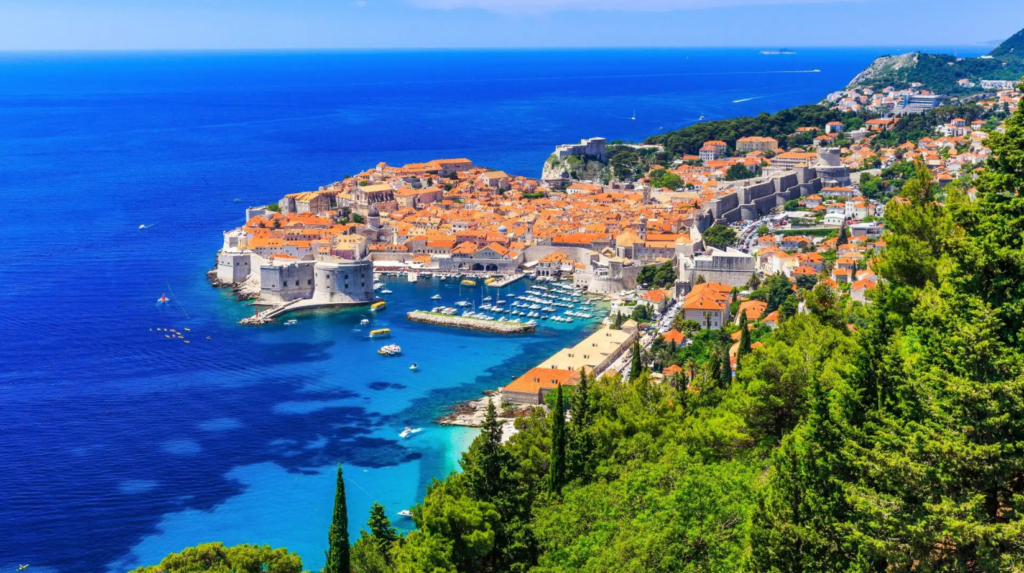
Dubrovnik, often referred to as the “Pearl of the Adriatic,” is a walled city renowned for its well-preserved medieval architecture.
Dubrovnik emerged as a prominent Mediterranean power during the late 13th century. This meticulously planned late-medieval city has withstood the test of time, preserving its unique character and making an indelible mark on the history of urban planning.
Dubrovnik’s ascendancy began in the 15th and 16th centuries when it blossomed into a vibrant center for maritime trade.
This newfound prosperity propelled the city to great heights, transforming it into a hub of economic and cultural significance.
As ships sailed in and out of its bustling harbor, Dubrovnik became a gateway to the riches of the Mediterranean, fostering a thriving trade network that extended far and wide.
Recognizing the historical and architectural significance of Dubrovnik, UNESCO gave it the prestigious title of a World Heritage Site in 1979.
The city’s old town, a mesmerizing labyrinth of cobblestone streets and stunning edifices, is a testament to its glorious past.
Walking through its narrow alleys, visitors are transported back in time, surrounded by the splendid beauty of Gothic, Baroque, and Renaissance architectural marvels.
From majestic churches to opulent palaces and serene monasteries, Dubrovnik’s old town is a treasure trove of architectural gems.
Insider tips:
- Explore the Historical Core: Situated at the base of Mount Srđ, the historical core of Dubrovnik is a UNESCO World Heritage Site. Stroll through the charming streets and immerse yourself in the unique blend of Gothic, Renaissance, and Baroque architecture. Don’t miss the opportunity to visit the iconic landmarks such as the Dubrovnik Cathedral and Rector’s Palace. well-preserved churches, monasteries, and fountains that showcase the city’s rich heritage.
- Walk the City Walls: The iconic city walls of Dubrovnik are a must-see. Embark on a leisurely walk along the ancient fortifications to enjoy breathtaking panoramic views of the Adriatic Sea and the picturesque red-roofed cityscape. To avoid crowds, consider visiting early in the morning or during sunset for a truly magical experience.
- Visit Stradun: The main street of Dubrovnik’s Old Town, Stradun, is a lively hub filled with shops, cafes, and historical landmarks. Take your time to wander along this magnificent pedestrian thoroughfare, soak in the vibrant atmosphere, and indulge in some people-watching at one of the charming outdoor cafes.
- Explore Fort Lovrijenac: Situated just outside the city walls, Fort Lovrijenac offers not only stunning views but also a glimpse into Dubrovnik’s history. Known as the “Gibraltar of Dubrovnik,” this impressive fortress has served both as a defensive stronghold and a venue for theatrical performances. Take a guided tour to learn more about its fascinating past.
- Take a Cable Car Ride: For an unparalleled view of Dubrovnik and its beauty, hop on the cable car that ascends to Mount Srđ. At the summit, you’ll be rewarded with breathtaking vistas, making it an ideal spot for capturing memorable photos. Consider timing your visit to coincide with the sunset for a truly awe-inspiring sight.
- Island-Hopping Adventures: Dubrovnik’s strategic coastal location makes it a perfect starting point for exploring the nearby islands. Take a boat tour and visit the enchanting Elafiti Islands, Lokrum Island’s botanical garden, or the stunning Mljet National Park. Each island offers its own unique charm and natural beauty.
- Enjoy the Culinary Delights: Dubrovnik offers a vibrant culinary scene focusing on fresh seafood, Mediterranean flavors, and local specialties. Don’t miss the opportunity to try dishes like black risotto, grilled squid, or traditional Croatian pastries. Pair your meal with a glass of Croatian wine in a traditional tavern or fine-dining Michelin-starred restaurant.
- Escape the Crowds: While Dubrovnik is undeniably popular, there are ways to escape the crowds and discover hidden gems. Explore the lesser-known neighborhoods outside the city walls, such as Lapad or Gruž, to experience a more authentic local atmosphere. Venture further afield to nearby towns like Cavtat or Ston for a quieter retreat.
- Attend Cultural Events: Check the local events calendar to see if any festivals, concerts, or exhibitions occur during your visit. Dubrovnik hosts various cultural events throughout the year, ranging from classical music concerts to theatrical performances and film festivals. Immerse yourself in the vibrant cultural scene and create lasting memories.
- Embrace the Adriatic Lifestyle: Finally, take the time to relax and soak up the laid-back Adriatic lifestyle. Whether it’s lounging on one of the city’s picturesque beaches, sipping coffee at a seaside cafe, or enjoying a leisurely boat ride, allow yourself to embrace the beauty and tranquility of this extraordinary coastal destination.
2. Plitvice Lakes National Park
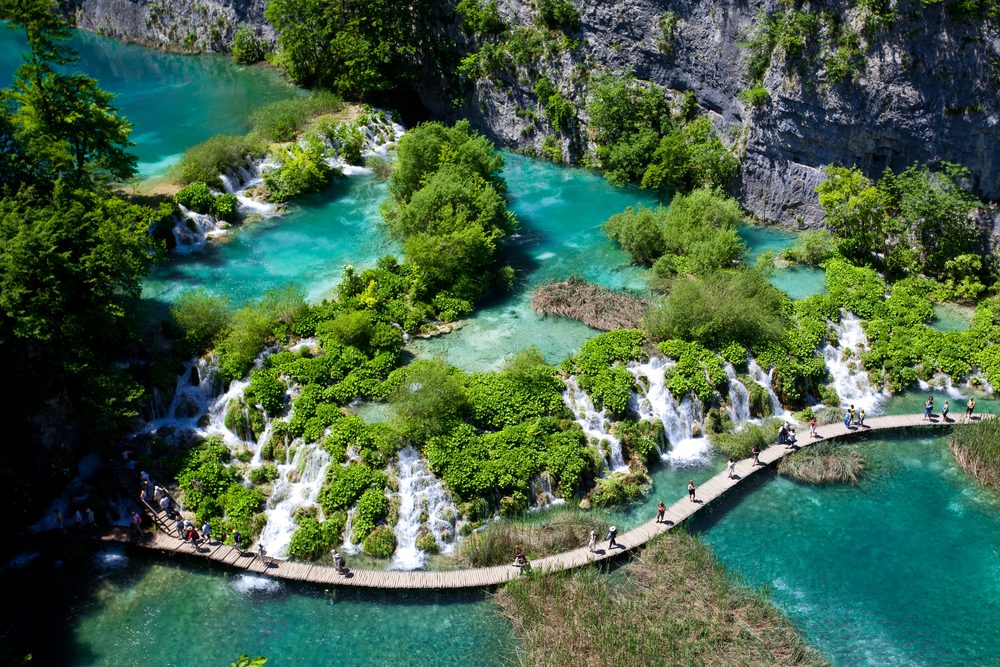
One of Croatia’s most remarkable natural wonders, Plitvice Lakes National Park, is a UNESCO site since 1979. that captivates visitors with its cascading waterfalls, crystal-clear lakes, and lush forests.
Situated on an expansive limestone and chalkland, Plitvice Lakes National Park has been shaped by the gentle caress of time, resulting in an awe-inspiring landscape of lakes, waterfalls, and unique formations.
Nature has meticulously crafted a symphony of beauty in this corner of the world, drawing in visitors from across the globe who seek solace in its tranquil embrace.
The park’s centerpiece is undoubtedly the 16 blue-green lakes, each separated by natural dams, which lend an ethereal quality to the surroundings.
These lakes are a sight to behold, with their crystal-clear waters reflecting the vibrant colors of the surrounding flora and changing hues with the shifting seasons.
From the lush greens of spring to the fiery reds of autumn, the Plitvice Lakes National Park offers an ever-changing spectacle that leaves visitors in awe.
Hiking trails and wooden boardwalks allow visitors to explore the park’s mesmerizing landscapes, making it a must-visit destination for nature enthusiasts.
Swimming and water sports are strictly prohibited within the park. This prohibition ensures that the Plitvice Lakes remain untarnished, allowing visitors to revel in the untouched beauty of the landscape.
Additionally, knowledgeable park rangers and guides are available to enhance your experience by providing valuable insights into the park’s history, geology, and the delicate ecosystem that thrives within its boundaries.
Their expertise will enrich your visit, shedding light on the intricate interconnectedness of the park’s elements and deepening your appreciation for its magnificence.
Insider tips:
- Plan Your Visit in Advance: Plitvice Lakes National Park attracts a significant number of visitors, especially during peak seasons. To avoid large crowds and make the most of your time, planning your visit in advance is advisable. Check the park’s website for updated information on opening hours, ticket prices, and trail conditions. Consider visiting early in the morning or during the quieter months to enjoy a more serene and immersive experience.
- Choose Your Trail Wisely: The park offers several hiking trails that cater to different preferences and fitness levels. The “A” trail is the most popular route, which takes you on a scenic journey through the Lower Lakes. For a more adventurous experience, opt for the “K” trail, which explores the less frequented Upper Lakes. Alternatively, you can take advantage of the park’s boat and electric train services to access different sections of the park more easily.
- Dress Appropriately and Wear Comfortable Shoes: As you explore Plitvice Lakes, be prepared for various weather conditions and terrains. Wear comfortable shoes for walking on uneven paths and pack a lightweight waterproof jacket, especially during rainy seasons. Don’t forget to bring sunscreen, a hat, and insect repellent to protect yourself from the elements.
- Follow Park Regulations: To preserve the natural beauty and ecological balance of Plitvice Lakes, certain rules and regulations are in place. Swimming and water sports are prohibited to maintain the pristine condition of the lakes. Respect these guidelines and follow the designated trails to minimize human impact on the fragile ecosystem. Remember to dispose of waste responsibly and leave no trace behind.
- Capture Memories, but Immerse Yourself in the Moment: Plitvice Lakes National Park offers endless opportunities for stunning photographs and videos. However, it’s important to balance capturing memories and immersing yourself in the moment. Take the time to disconnect from technology and fully appreciate this natural wonder’s sights, sounds, and aromas. Allow yourself to be present and let the tranquility of the surroundings wash over you.
- Look out for Wildlife: Beyond its breathtaking landscapes, Plitvice Lakes National Park is home to diverse wildlife. Keep your eyes peeled for rare species of birds, including the majestic golden eagle and the colorful kingfisher. If you’re lucky, you might even catch a glimpse of a brown bear or a wolf, although they tend to be elusive. Respect the wildlife and maintain a safe distance to ensure their well-being and yours.
- Explore Beyond the Lakes: While the lakes and waterfalls steal the spotlight, Plitvice Lakes National Park has much more to offer. Venture off the beaten path and explore the park’s lush forests, meandering rivers, and hidden caves. Stay in some of the unique accommodations in Croatia and discover the hidden gems beyond the lakes, as they hold their own charm and allure.
- Visit in Different Seasons: Plitvice Lakes National Park undergoes a mesmerizing transformation with each passing season. Each time of year offers a unique perspective, from the vibrant colors of autumn to the icy wonderland of winter. Consider visiting during multiple seasons to witness the park’s ever-changing beauty and experience its diverse moods.
3. Historical Complex of Split with the Diocletian’s Palace
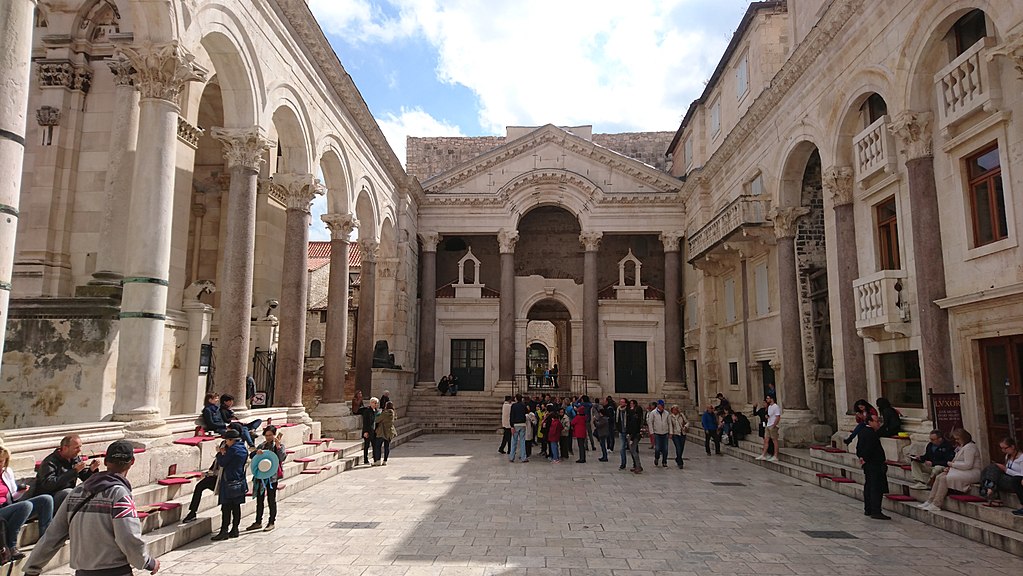
Located within Croatia’s second-largest city, Split, lies Diocletian’s Palace, an ancient architectural marvel constructed for the Roman Emperor Diocletian during the late 3rd century.
This magnificent palace complex, comprising 220 buildings, stands proudly as one of the world’s best-preserved monuments of Roman architecture, forming the heart of Split’s Old Town.
Today, this historical site pulsates with life, its maze of streets teeming with bustling activity, including vibrant bars, charming restaurants, eclectic shops, and a vibrant tapestry of people.
Beyond its sheer grandeur and preservation, Diocletian’s Palace holds immense significance as a testament to late-ancient architecture.
It safeguards original elements and the entirety of the palace and showcases a remarkable fusion of architectural styles that foreshadowed the emergence of early Christian, Byzantine, and early medieval art.
The centerpiece of the palace, the imposing Cathedral of Saint Domnius, dates back to the Middle Ages and was constructed using materials repurposed from an ancient mausoleum.
The Roman walls of the complex encapsulate within them a captivating blend of structures, including Romanesque churches from the 12th and 13th centuries, medieval forts, and palaces exhibiting gothic, Renaissance, and baroque influences.
This harmonious coexistence of architectural styles has transformed the Historical Complex of Split into a captivating ensemble that reflects Croatia’s rich heritage.
Designated as a Croatian national heritage site in 1979, Split’s Historical Complex encompasses a sprawling area spanning 38,500 square meters, comprising a treasure trove of Roman archaeological monuments.
Its most iconic and distinctive feature is undeniably Diocletian’s Palace, which has been transformed into an open-air museum, eliciting awe-inspiring reactions from every visitor who passes through its ancient doors.
Constructed primarily using stone sourced from the nearby island of Brač, visitors can explore the labyrinthine streets within the palace walls revealing a vibrant mix of shops, restaurants, and historical landmarks, including the Cathedral of Saint Domnius.
Insider tips:
- Timing Is Key: To fully appreciate the beauty and grandeur of the Palace of Diocletian, consider arriving early in the morning or later in the afternoon. These quieter times will allow you to easily wander through the complex and immerse yourself in the ambiance of this ancient wonder. Additionally, you’ll have a better chance to capture stunning photographs without large crowds obstructing your view.
- Begin at the Peristyle: Start your journey at the heart of the palace, the Peristyle. This magnificent courtyard, surrounded by impressive columns and adorned with ancient statues, sets the stage for the grandeur that awaits you. Take a moment to absorb the atmosphere and visualize the bustling life that once filled this space.
- Explore the Underground: Venture beneath the surface of the palace to discover its hidden depths. The substructures, or basements, offer a labyrinthine network of tunnels, vaults, and chambers. These underground passageways were once used for storage, but now house small shops, galleries, and intriguing historical exhibitions. Don’t miss the chance to explore this fascinating underworld; it provides a unique perspective on the palace’s history.
- Visit the Cathedral of St. Domnius: Located within the palace complex, the Cathedral of St. Domnius is an architectural masterpiece that should not be missed. Ascend the bell tower for panoramic views of Split and the surrounding Adriatic Sea. Inside the cathedral, admire the impressive collection of religious art and relics, including the ornate wooden statue of St. Domnius.
- Take a Stroll along the Riva Promenade: After immersing yourself in the historical wonders of the palace, take a leisurely stroll along the Riva Promenade. This vibrant waterfront promenade is lined with cafes, restaurants, and boutique shops, offering a delightful blend of Mediterranean charm and modern sophistication. Relax with a refreshing drink, savor local delicacies, and soak in the picturesque views of the harbor.
- Indulge in Local Cuisine: Croatian cuisine is a delightful fusion of Mediterranean and Central European flavors, and Split offers an array of culinary delights to satisfy any palate. Pair your meal with Croatian wine for a truly authentic experience.
4. Episcopal Complex of the Euphrasian Basilica in the Historic Centre of Poreč
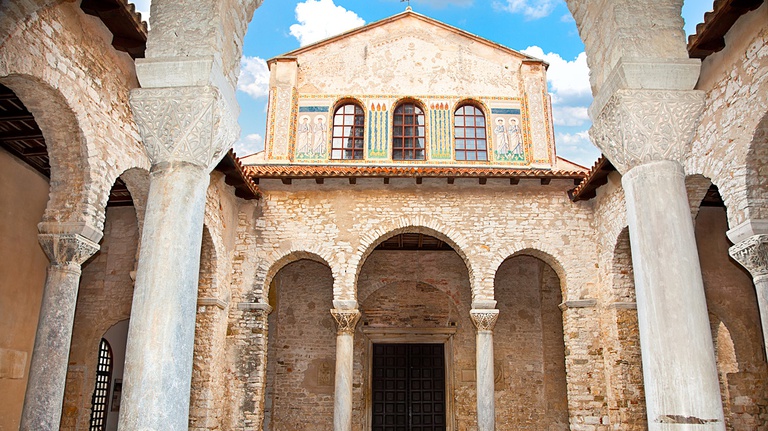
The Episcopal Complex of the Euphrasian Basilica in the Historic Centre of Poreč is an architectural marvel that stands as a testament to the rich history of Christianity and Byzantine art.
Situated in the ancient Roman town of Poreč in Istria, this remarkable complex has earned the prestigious status of a UNESCO World Heritage site.
Dating back to the 4th century, the Episcopal Complex is the most complete complex of its kind in the world.
The Nasilica is named after Bishop Euphrasius, who comprehensively renovated the cathedral in the mid-6th century.
Its construction showcases the finest examples of Byzantine architecture and artistry, captivating visitors with its grandeur and beauty.
Comprising a church, memorial chapel, atrium, baptistery, and the episcopal palace, this complex is a masterful blend of various architectural styles.
One of the most awe-inspiring features of the Episcopal Complex is the resplendent mosaic illustrations that adorn its walls.
These intricately designed mosaics, dating back to the 6th century, are nothing short of breathtaking.
Considered among the most significant examples of its kind in Europe, these mosaics transport visitors to a realm of divine beauty.
The mosaics’ delicate artistry and intricate detailing evoke a sense of reverence and awe, leaving an indelible impression on all who behold them.
The mosaics are particularly renowned for depicting biblical scenes and religious figures, immersing viewers in a world of spiritual devotion and visual splendor.
Stepping into the Episcopal Complex is like stepping back in time, as it is believed to be one of the founding places of Christianity.
The fusion of classical and Byzantine elements within the basilica is a testament to the builders’ exceptional craftsmanship and artistic vision.
Aside from the architectural splendors, the Episcopal Complex offers visitors a panoramic view of the surrounding area from the bell tower of the archbishop’s palace.
Insider tips:
- Attend a Concert or Cultural Event: Throughout the year, the Episcopal Complex hosts a variety of concerts and cultural events that take advantage of the exceptional acoustics within the basilica. Check the local events calendar and plan your visit accordingly to experience the magic of live music amidst the historical ambiance of this UNESCO site.
- Plan Your Visit Wisely: To make the most of your time at the Episcopal Complex, consider visiting during the early morning or late afternoon to avoid crowds and capture the best lighting for photography. The complex is open year-round, but be sure to check the specific opening hours to plan your visit accordingly.
- Embrace the Old Town Charm: Poreč’s historic center, known as the Old Town, is a labyrinth of narrow streets lined with charming stone houses, colorful Venetian-era buildings, and hidden courtyards. Start your exploration from Marafor Square, the ancient Roman forum, and make your way to the Euphrasian Basilica, a UNESCO World Heritage Site.
- Uncover Ancient History: The Istrian Archaeological Museum is another fascinating stop for history enthusiasts, showcasing artifacts from prehistoric times to the Middle Ages.
- Island-Hopping Adventure: Hop on a boat and explore the nearby islands of the Poreč archipelago, such as Sveti Nikola or Sveta Katarina. These idyllic islands offer secluded beaches, crystal-clear waters, and breathtaking views. Pack a picnic, rent a kayak or a boat, or bask in the sun as you enjoy the peaceful surroundings. If you’re feeling adventurous, try snorkeling or diving to discover the vibrant underwater world of the Adriatic.
- Taste the Flavors of Istria: Istria is renowned for its gastronomy and Michelin-starred restaurants, and Poreč is no exception. Sample the local delicacies at traditional konobas (taverns) or seafood restaurants along the waterfront. Don’t miss trying Istrian truffles, renowned olive oil, and the world-famous Malvasia Istriana or Teran wines. Visit the farmer’s market in the heart of Poreč to savor the freshest local produce, including fruits, vegetables, cheese, and cured meats.
- Cycle through Scenic Landscapes: Rent a bike and embark on a two-wheeled adventure through the breathtaking landscapes surrounding Poreč. The region offers numerous well-marked cycling trails, allowing you to explore the lush vineyards, olive groves, and charming villages. Pedal along the Parenzana, a former railway track turned into a scenic cycling route, and enjoy the stunning panoramas of Istria’s countryside.
- Seek Adventure in the Baredine Cave: Escape the summer heat and venture into the fascinating underworld of the Baredine Cave, located just a short drive from Poreč. Descend into the depths of this subterranean wonderland and marvel at the stunning stalactites.
5. Historic city of Trogir
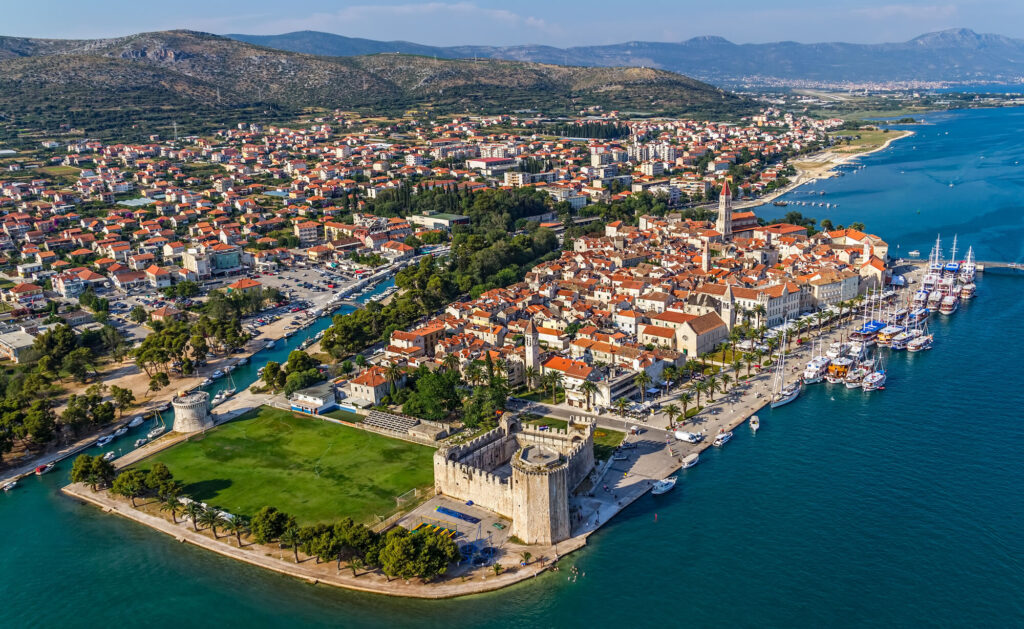
Located near Split, the charming town of Trogir stands as a testament to urban continuity, showcasing a rich tapestry of architectural styles that span centuries.
Steeped in history and blessed with a picturesque setting, Trogir is an excellent example of how a settlement can evolve and flourish over time while preserving its cultural heritage.
The roots of Trogir’s urban layout can be traced back to the Hellenic era, characterized by its orthogonal street plan.
Throughout the ages, successive rulers have left their mark on this island settlement, adorning it with remarkable public and residential buildings and formidable forts.
Each era has contributed to the town’s unique character, resulting in a captivating blend of architectural styles.
One cannot help but be captivated by the town’s Romanesque churches, which stand as proud testaments to Trogir’s past.
However, they are just the beginning of the architectural marvels that await visitors. Renaissance and Baroque buildings, exuding elegance and grandeur, gracefully dot the town’s streets, adding further layers of beauty and historical significance.
Undoubtedly, the crown jewel of Trogir’s architectural wonders is the Trogir Cathedral.
Its west portal, a masterpiece crafted by the skilled hands of Radovan, stands as an extraordinary example of Romanesque and Gothic artistry in Croatia.
This magnificent structure serves as a place of worship and a reminder of the exceptional craftsmanship and artistic expression of a bygone era.
Recognized for its unparalleled beauty and cultural value, the Historic City of Trogir was inscribed as a UNESCO World Heritage Site in 1997.
This prestigious designation highlights the town’s significance globally and emphasizes the need to protect and preserve its architectural treasures. Trogir’s inclusion on this esteemed list is a testament to its status as one of Europe’s finest medieval architectural complexes.
Wandering through the streets of Trogir is like stepping back in time.
The town’s palaces and churches offer glimpses into the lives of past inhabitants and the architectural trends that shaped their surroundings.
It is within this evocative ambiance that visitors can truly appreciate the fusion of Romanesque, Gothic, Renaissance, and Baroque styles that make Trogir an architectural gem.
Insider tips:
- Explore the Historic Old Town: Trogir’s Old Town is a marvel, a well-preserved medieval city packed with cobblestone streets, charming squares, and architectural wonders. Take your time to wander through the labyrinthine alleys, where every corner reveals a new discovery. Admire the iconic St. Lawrence Cathedral, a Romanesque and Gothic architecture masterpiece, and visit the fascinating City Museum housed in the Garagnin-Fanfogna Palace. Don’t forget to climb the bell tower for panoramic views of the town and its surroundings.
- Walk the Trogir Promenade: The Trogir Promenade, known as the Riva, is a vibrant waterfront area buzzing with activity. Take a leisurely stroll along the promenade with cafes, restaurants, and boutique shops. Enjoy a cup of coffee while basking in the Mediterranean atmosphere or indulge in delicious seafood at one of the waterfront restaurants. The Riva is also the perfect spot to people-watch and witness the picturesque scenery as boats sail in and out of the harbor.
- Visit the Fortress Kamerlengo: For a glimpse into Trogir’s military history, visit the Fortress Kamerlengo. This imposing 15th-century fortress offers panoramic views of the town, the sea, and the nearby islands. Explore its ancient walls, climb the towers, and imagine the battles that once took place here. During the summer, the fortress hosts various cultural events, including concerts and exhibitions, adding enchantment to your visit.
- Take a Boat Trip to the Blue Lagoon: One of the highlights of visiting Trogir is the opportunity to explore the mesmerizing Blue Lagoon. Hop on a boat tour from Trogir and sail to this secluded paradise. The Blue Lagoon’s crystal-clear turquoise waters and sandy seabed create an idyllic setting for swimming, snorkeling, and sunbathing. Immerse yourself in the serene ambiance and marvel at the vibrant marine life beneath the surface.
- Experience the Local Gastronomy: Croatia is known for its delicious cuisine, and Trogir is no exception. Indulge in traditional Dalmatian dishes such as peka (a slow-cooked meat and vegetable dish), fresh seafood, and local wines. Explore the local markets to sample regional specialties, including prosciutto, cheese, and olive oil.
- Escape to the Trogir Riviera: While Trogir itself is captivating, the surrounding Trogir Riviera offers even more natural beauty to explore. Rent a car or take a bus and discover charming coastal villages, hidden coves, and stunning beaches. Consider visiting Okrug Gornji, known for its long stretches of pebble beaches and vibrant beach bars. Alternatively, head to the nearby Krka National Park to witness the breathtaking waterfalls and hike through lush greenery.
- Attend Cultural Festivals: Trogir comes alive with cultural festivals throughout the year. If you have the opportunity, plan your visit to coincide with one of these lively events. The Klapa Festival celebrates the traditional a cappella singing style of Dalmatia, while the Trogir Cultural Summer features exhibitions and concerts. These festivals offer an immersive experience into the local culture and provide unforgettable memories.
6. Stari Grad Plain on Hvar Island
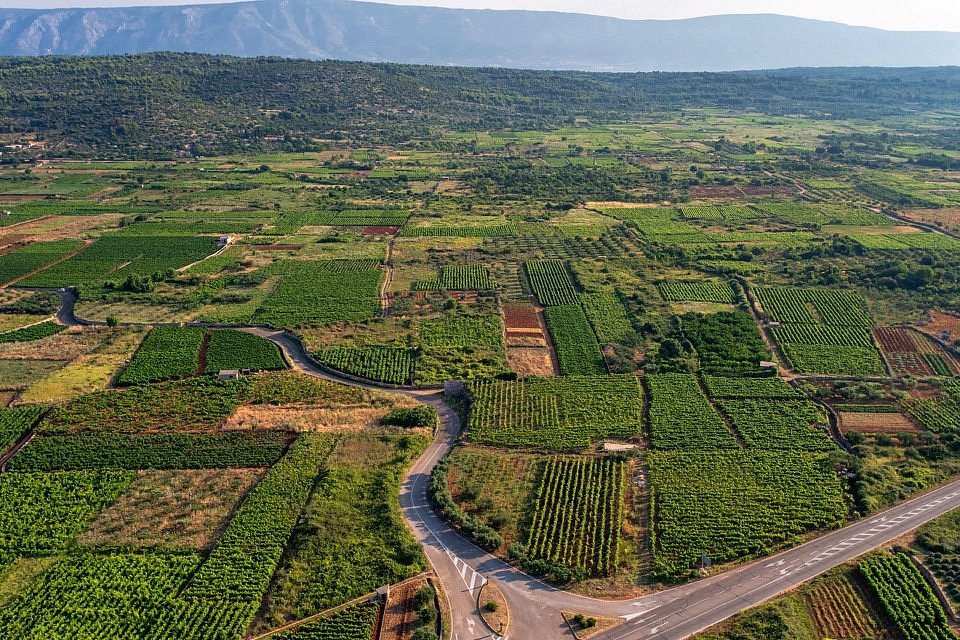
Situated on the island of Hvar, Stari Grad Plain represents an exceptional example of ancient Greek land division practices.
In July 2008, the Stari Grad Plain, located on the island of Hvar, was granted the prestigious status of a UNESCO World Heritage site.
The cultural landscape of Stari Grad Plain has remained nearly intact since that period, with grape and olive agriculture continuing to thrive to this day.
As far as the eye can see, vineyards and olive groves grace the plain, embodying an unbroken tradition spanning centuries.
Additionally, the plain is replete with archaeological sites that bear witness to the ancient Greeks’ utilization of a geometrical system of land division.
The Stari Grad Plain serves as a unique testament to the ancient practice of geometric land division, providing an invaluable glimpse into the region’s rich agricultural heritage.
In the summer of 385 B.C., approximately one hundred families embarked on a journey from Paros on the eponymous island in the Aegean Sea. Their destination was the island of Hvar, known as Fiteja in ancient times.
Within the Stari Grad Plain, a prominent landmark known as the omphalos marked the starting point, offering a vantage point encompassing the entire plain.
Using a simple surveying instrument called the groma, the settlers surveyed and partitioned the plain into parcels measuring 1 x 5 stadia, equivalent to approximately 180 x 900 meters. Boundary stones were also erected, inscribed with the names of the parcel owners.
The settlers swiftly began constructing ancillary buildings and lodgings within the plain on their respective estates. Some of these structures, dating back to the Roman era, exude a sense of luxury, with around sixty remnants being discovered thus far. ž
Today, the Stari Grad Plain is the most well-preserved ancient Greek landscape in the Mediterranean region.
Exploring the Stari Grad Plain provides a unique opportunity to connect with the roots of the past, gaining insight into the practices and traditions of ancient Greek settlers.
Insider tips:
- Understanding the Stari Grad Plain’s History: The Stari Grad Plain, also known as the Ager or Hora, was established by the ancient Greeks in the 4th century BC. It is one of the oldest agricultural landscapes in the Mediterranean region, shaped by human hands over millennia. Take some time to learn about the plain’s history before your visit. This will enhance your appreciation for its significance and provide you with a deeper understanding of the cultural landscape you are about to explore.
- Visit the Stari Grad Museum: Start your journey by visiting the Stari Grad Museum located in the town of Stari Grad. This museum provides valuable insights into the plain’s history, showcasing artifacts and exhibits highlighting the island’s past. Gain a comprehensive understanding of the island’s agricultural traditions, the process of land division, and the ancient Greek and Roman influences that shaped the region.
- Explore the Plain on Foot or by Bike: To truly immerse yourself in the beauty of the Stari Grad Plain, opt for a leisurely walk or a bike ride. Several well-marked trails crisscross the plain, leading you through olive groves, vineyards, and lavender fields. The paths are relatively easy to navigate, making it a pleasant experience for visitors of all ages and fitness levels. As you explore, keep an eye out for the ancient stone walls, known as “gromače,” which were used for land division and irrigation purposes.
- Visit the Ancient Greek Field System: As you traverse the Stari Grad Plain, you’ll encounter the remnants of the ancient Greek field system. The land was divided into rectangular plots known as “chora” by the Greeks. These plots are still visible today and provide a remarkable testament to the agricultural practices of the past. Take a moment to appreciate the precision and foresight of the ancient land planners.
- Indulge in Local Products: One of the highlights of visiting the Stari Grad Plain is the opportunity to taste and purchase locally produced goods. The region is renowned for its olive oil, honey, wine, and dried lavender products. Visit the local farms and producers to sample these delicacies and take home some authentic Croatian souvenirs. You can also visit the Stari Grad Plain Agricultural Cooperative, which offers a range of local products and provides a deeper insight into the region’s agricultural practices.
- Attend the Festivals: If you happen to visit during the summer months, make sure to check the calendar for festivals that celebrate the island’s cultural heritage through various performances, concerts, art exhibitions, and theater productions. It’s an excellent opportunity to experience the vibrant local culture and witness traditional dances, music, and theater performances.
- Take a Break at the Beaches: After exploring the Stari Grad Plain, reward yourself with some relaxation time at the nearby beaches. The island of Hvar is famous for its stunning coastline, pristine waters, and secluded coves. Pack a picnic and find your own little slice of paradise to unwind, swim, and soak up the sun.
- Hire a Local Guide: For a more in-depth and personalized experience, consider hiring a local guide specializing in the Stari Grad Plain. They can provide fascinating insights into the plain’s history, explain island wine culture for true wine lovers, and agricultural practices, enriching your visit with their expertise and local knowledge.
- Respect the Environment and Local Customs: While exploring the Stari Grad Plain, respect the environment and adhere to local customs. The plain is not just a historical site; it’s a living landscape that sustains the local community. Stay on marked trails, avoid damaging any crops, and be mindful of the ongoing agricultural activities.
- Capture the Beauty: Finally, don’t forget to bring your camera or smartphone to capture the breathtaking beauty of the Stari Grad Plain. From the lush green fields to the vibrant colors of lavender and wildflowers, there are countless opportunities for stunning photographs.
7. Cathedral of St. James in Šibenik
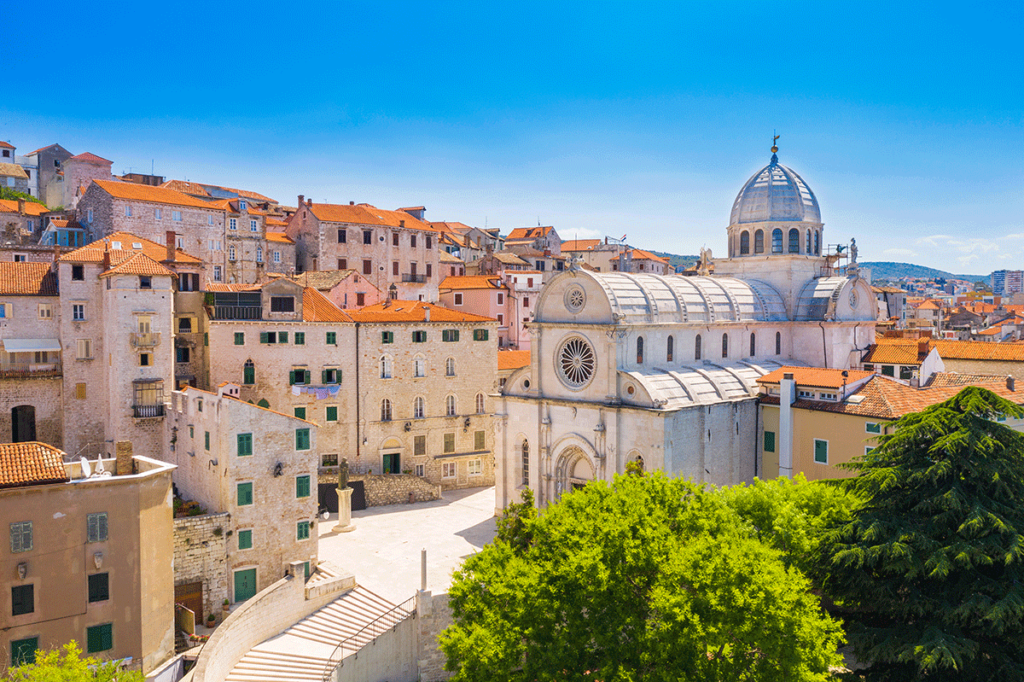
The Cathedral of St. James, located in the charming coastal town of Šibenik in central Dalmatia, is a testament to the rich architectural heritage of the Renaissance.
Built between 1431 and 1535, this magnificent Catholic church is the fusion of architectural traditions from North Italy, Tuscany, and Dalmatia.
The construction of the Cathedral of St. James was a collaborative effort involving three talented architects: Francesco di Giacomo, George of Dalmatia, and Nicholas of Florence.
Together, they developed a structure entirely crafted from stone, employing a unique technique for the cathedral’s dome.
This remarkable achievement, constructed entirely from stone, sourced the material from various locations such as Brač, Korčula, Rab, and Krk.
The result is a harmonious and awe-inspiring edifice, showcasing exceptional arrangement methods and an absolute sense of harmony within its walls.
The cathedral is a true masterpiece and is the most important architectural monument of the Renaissance in the nowadays Croatia.
In fact, it is believed to be the largest church in the world that is entirely built using stone.
One of the notable features of the Cathedral of St. James is the exterior frieze, which adorns the outer walls with intricate decorations.
This frieze consists of 71 carved stone heads, each depicting individuals from the 15th century—men, women, and children.
The faces are highly individualized, displaying a range of facial expressions and characteristics. Interestingly, the identities of these individuals remain a mystery, adding an air of intrigue and fascination to this magnificent structure.
Another highlight of the cathedral is the beautifully carved ceiling of the baptistery.
Crafted with meticulous detail and artistry, the ceiling captivates visitors with its intricate designs and exquisite craftsmanship.
It serves as a testament to the skill and talent of the artisans who contributed to the construction of this architectural gem.
Recognizing its immense cultural and historical value, the Cathedral of St. James was inscribed as one of Croatia’s World Heritage Sites in 2000.
Its significance extends beyond its religious purpose, serving as a living testament to the cross-pollination of architectural styles and influences that occurred during the Renaissance era.
Today, the Cathedral of St. James inspires awe and admiration among its countless visitors. Its towering presence, intricate stone carvings, and remarkable architectural achievements leave a lasting impression on all who have the privilege of experiencing its grandeur.
Insider tips:
- Discover the Historic Heart of the City: Explore the historic center of Šibenik, a UNESCO World Heritage Site. Stroll through the narrow, cobblestone streets, and marvel at the well-preserved medieval architecture. Don’t miss the magnificent St. James Cathedral, a true masterpiece of the Renaissance period. Climb up to the top of the bell tower for panoramic views of the town and the Adriatic Sea.
- Explore the Fortresses: Šibenik is home to several impressive fortresses that glimpse its military past. Visit St. Michael’s Fortress, strategically perched on a hilltop, and enjoy its stunning views over the city and the sea. Another must-visit is St. Nicholas Fortress, a magnificent structure built on a small island at the entrance of Šibenik’s Bay. Take a boat trip to the fortress and immerse yourself in history.
- Unwind at the Beaches: Šibenik boasts beautiful beaches where you can relax and soak up the Mediterranean sun. Banj Beach, located just a short walk from the city center, is popular among locals and tourists. For a more secluded experience, head to Solaris Beach, a resort area offering a variety of beaches, restaurants, and water sports activities.
- Indulge in Local Cuisine: Croatian cuisine is a delightful fusion of Mediterranean and Central European flavors, and Šibenik is no exception. Don’t miss the opportunity to try traditional Dalmatian dishes. Pair your meal with a glass of local wine or the famous Maraschino liqueur, produced from marasca cherries.
- Island-Hopping Adventure: Šibenik is an ideal starting point for exploring the nearby islands of the Šibenik archipelago. Hop on a boat and visit the enchanting Kornati National Park, a unique cluster of islands and reefs known for their raw beauty and crystal-clear waters. You can also explore the islands of Zlarin, Prvić, and Kaprije, which offer a slower pace of life and a glimpse into the traditional Dalmatian culture.
- Attend a Cultural Event: Šibenik hosts a vibrant cultural scene with numerous festivals and events annually. The International Children’s Festival, held in June, features theater performances, workshops, and art exhibitions. The Šibenik Cultural Summer, taking place from July to August, offers a diverse program of concerts, theater plays, and film screenings in various locations around the city.
- Wander Beyond the Main Streets: While the main streets of Šibenik are undoubtedly charming, don’t be afraid to venture off the beaten path. Explore the hidden alleys, where you’ll find small artisan shops, local cafes, and family-run restaurants serving authentic Croatian cuisine. Engage with the friendly locals, and you’ll discover a warm and welcoming community eager to
8. Stećci Medieval Tombstones Graveyards
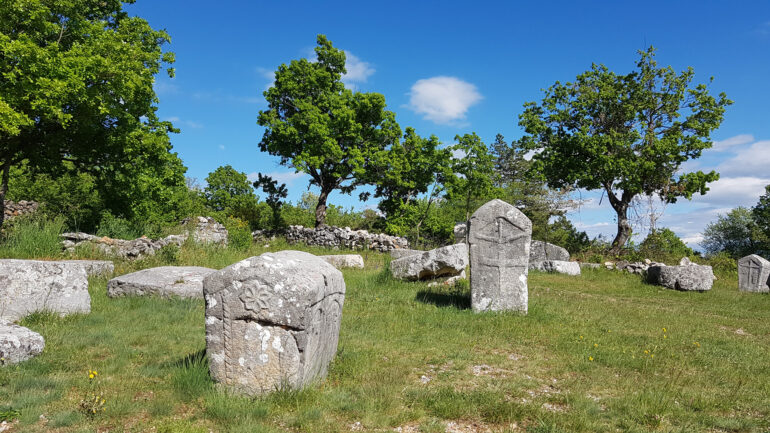
The Balkan region is home to a remarkable and enigmatic form of medieval tombstone known as the “stećci.”
These monumental tombstones, predominantly crafted from limestone, possess a rectangular shape with a flat or gable-top surface. The stećci come in two forms: recumbent, lying flat on the ground, and upright, standing tall like sentinels of the past.
Their significance lies not only in their unique form but also in the intricate decorations adorning them. The stećci tombstones often bear inscriptions or simple images such as spirals, arcades, stars, and religious symbols.
However, they also display more elaborate motifs, including animals, chivalric tournaments, and the renowned image of a man with his right hand raised.
It is believed that the choice of ornamentation was not solely the decision of the craftsmen but also influenced by the wishes of the deceased individuals who found their eternal rest beneath these stones.
Each stećak was crafted according to the specific requirements and preferences of the person commemorated.
Analysis suggests that the first stećci were created in the latter half of the 12th century and reached their zenith in the 14th and 15th centuries. However, by the early 16th century, the tradition of crafting stećci had come to a complete halt.
Today, approximately 4,400 of these remarkable tombstones are scattered across two necropolises in Croatia. These necropolises can be found in Velika and Mala Crljivica, Cista Velika, and Dubravka/St. Barbara, Konavle.
The Mala Crljivica site is conveniently located about 55 kilometers east of Split, allowing visitors to reach it within an hour’s drive. Similarly, the Dubravka site lies just an hour’s drive south of Dubrovnik.
A journey to the stećci opens a portal to the medieval past, offering a glimpse into the lives and beliefs of the people who once inhabited these lands.
Visitors traverse the rows of tombstones and encounter a visual tapestry of iconographic motifs and inscriptions, representing both broader European medieval traditions and unique regional expressions.
The stećci are not merely lifeless markers but silent storytellers, whispering tales of a bygone era and inviting exploration and contemplation.
Insider tips:
- Unraveling the Mystery of Stećci: The Stećci tombstones, also known as medieval necropolises, are found primarily in Bosnia and Herzegovina, Croatia, Montenegro, and Serbia. These remarkable tombstones date back to the 12th to 16th centuries and are characterized by their intricate carvings, unique motifs, and enigmatic symbols. The origins and purpose of the Stećci tombstones remain shrouded in mystery, adding to their allure.
- Choosing the Right Time to Visit: To fully appreciate the beauty and tranquility of the Stećci tombstones, it’s advisable to plan your visit during the spring or autumn seasons. The weather during these times is generally mild, making it ideal for exploring the graveyards and enjoying the surrounding landscapes. Additionally, weekdays are usually less crowded than weekends, allowing you to immerse yourself in the ambiance of these ancient sites without distraction.
- Must-Visit Stećci Tombstone Sites: While numerous Stećci tombstone graveyards are scattered across the region, some locations stand out for their historical significance and exceptional preservation. Here are a few must-visit sites to include in your itinerary:
- Radimlja Necropolis (Bosnia and Herzegovina): Located near Stolac, Radimlja Necropolis is one of the largest and most impressive Stećci graveyards. Its well-preserved tombstones feature intricate carvings depicting scenes from everyday life, religious symbols, and warrior motifs.
- Cista Velika (Croatia): Situated near the town of Trilj, Cista Velika boasts an array of beautifully decorated tombstones. The site’s unique atmosphere, surrounded by lush greenery and picturesque landscapes, enhances the overall experience.
- Boljuni Necropolis (Montenegro): Nestled in the peaceful village of Boljanići, Boljuni Necropolis showcases some of the finest examples of Stećci tombstones. The site offers a serene and ethereal ambiance, inviting visitors to step back in time and contemplate the enigmatic history of the region.
- Grčko groblje (Serbia): Located near the town of Ždrelo, Grčko groblje is a hidden gem that is often overlooked by tourists. Here, you can witness the coexistence of Christian and Pagan symbols on the tombstones, providing a unique insight into the cultural diversity of the medieval era.
- Respectful Exploration: When visiting the Stećci tombstones, it is crucial to approach them with reverence and respect. These ancient graveyards hold immense historical and cultural significance, and it’s important to tread lightly and refrain from touching or climbing on the tombstones. Taking photographs is generally permitted, but be mindful of the surroundings and avoid causing any damage.
- Engage with Local Guides and Experts: To truly grasp the historical context and significance of the Stećci tombstones, consider hiring a local guide or engaging with knowledgeable experts. These professionals can provide valuable insights into the symbolism, architectural styles, and legends associated with these medieval marvels. Their expertise will enrich your experience and help unravel the mysteries surrounding the Stećci tombstones.
- Immerse Yourself in the Local Culture: While the Stećci tombstones are undoubtedly the highlight of your visit, take the time to explore the nearby towns and immerse yourself in the local culture. Taste the traditional cuisine, interact with the friendly locals, and visit nearby historical landmarks to gain a deeper understanding of the region’s rich heritage.
- Preserve and Conserve: As a responsible traveler, it’s essential to prioritize the preservation and conservation of these cultural treasures. Refrain from taking any artifacts or damaging the tombstones in any way. By leaving the Stećci tombstones undisturbed, you contribute to their long-term preservation, ensuring future generations can enjoy and appreciate their beauty.
9. The Venetian Works of Defence between the 16th and 17th Centuries
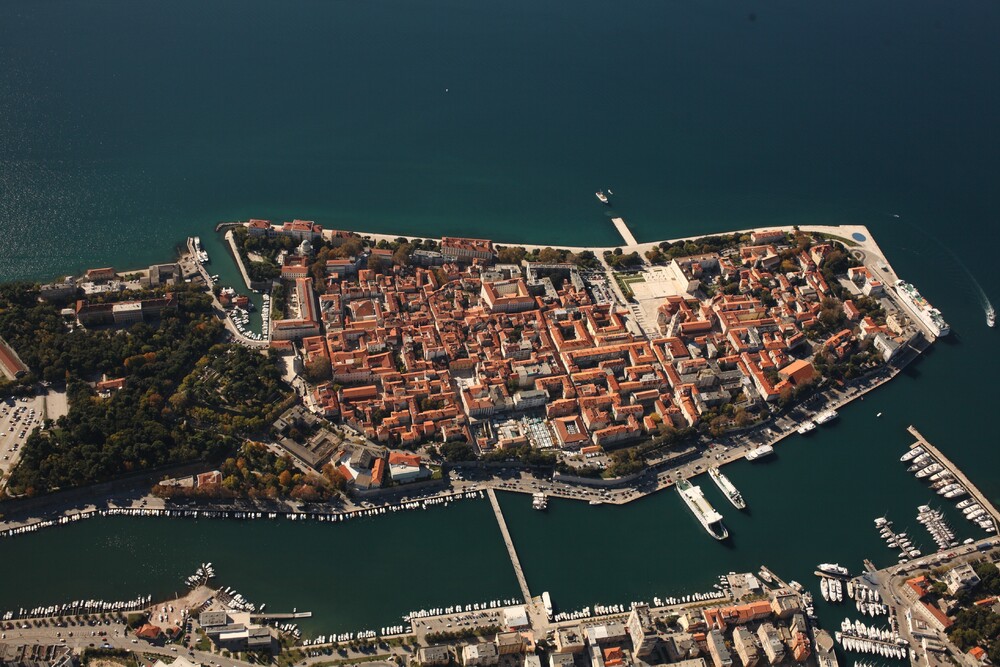
Croatia, known for its breathtaking coastline and rich historical heritage, is home to two remarkable UNESCO World Heritage sites: the defence system of Zadar and the Šibenik fortress of St. Nicholas.
These sites are part of the larger transnational series known as the Venetian Works of Defense between the 16th and 17th Centuries.
With their exceptional historical, architectural, and technological significance, these fortifications provide a glimpse into the innovative “alla moderna” system developed by the ex-Venetian Republic in response to advancements in firearms technology.
Zadar, the military and administrative center of Dalmatia during that period, boasts the largest and most powerful fortress in the Adriatic.
Serving as a vital point of defence along the maritime route between Venice and Corfu, the Zadar defence system played a crucial role in safeguarding the region from threats posed by the Ottoman Empire.
Today, Zadar proudly preserves the most significant elements of the “alla moderna” system, including the city walls adorned with a series of formidable bastions.
Notably, Ponton stands out as the first bastion constructed in the “alla moderna” style and remains the largest bastion in the Adriatic.
Visitors can also marvel at the monumental Land Gate, a Renaissance architectural masterpiece from the 16th century, as well as the outer Forte fortress.
Another exceptional fortress within the Venetian Works of Defense is the St. Nicholas fortress in Šibenik.
Built-in the mid-16th century to protect Šibenik from potential Ottoman fleet invasions, this mighty fortress sits atop a rocky crag at the entrance of the Šibenik channel.
Designed by Gian Girolamo Sanmicheli, the fortress forms a triangular structure spanning three levels.
It represents a remarkable example of an isolated bastion fortress built by the fortified “alla moderna” system. The St. Nicholas fortress was added to the UNESCO list in 2017, further solidifying its significance within the larger Venetian Works of Defense framework.
Visiting the Venetian Works of Defense offers a unique opportunity to delve into the fascinating history of the Venetian Republic during its heyday.
These fortresses, spread across Croatia, Italy, and Montenegro, span over 1,000 kilometers along the eastern Adriatic coast.
Together, they formed the renowned “Serenissima” during the 16th and 17th centuries, a period of utmost significance for the Venetian Republic.
By exploring these fortifications, visitors can gain a deeper understanding of the Republic’s might and power, witnessing firsthand how they defended themselves against various enemies and invaders.
Insider tips:
Zadar
- A Tapestry of History and Charm: The Venetian fortress of Zadar, locally known as “Kaštel,” stands proudly as a symbol of the city’s defensive heritage. Here are some insider tips to enhance your Zadar experience:
- Marvel at the Spectacular Sunset: The Sea Organ and Greeting to the Sun, located on Zadar’s waterfront promenade, offer a mesmerizing experience. Enjoy the melodious sounds of the Sea Organ, an architectural marvel that uses the power of waves to create unique musical compositions. Afterward, witness the captivating light show of the Greeting to the Sun, a circular installation embedded with solar panels that come alive at dusk.
- Explore the Hidden Gems: While the main attractions of Zadar are undoubtedly breathtaking, take time to explore the lesser-known treasures. Wander through the Old Town’s narrow streets, discover ancient Roman ruins, and stumble upon charming cafés and boutique shops tucked away in hidden corners.
- Indulge in Local Delights: Zadar boasts a vibrant culinary scene. Don’t miss the opportunity to savor traditional Dalmatian cuisine at local restaurants. Try delicious seafood specialties like “brudet” (fish stew) or “pašticada” (beef stew), accompanied by a glass of fine Croatian wine.
Šibenik
- A Coastal Marvel Rich in Heritage: The Šibenik Fortress, a UNESCO World Heritage Site, dominates the city’s skyline and provides an immersive journey into the past. Here are insider tips for a memorable visit:
- Witness a Masterpiece of Renaissance Architecture: The Šibenik Cathedral of St. James, a UNESCO-listed cathedral, is a true masterpiece of Renaissance and Gothic styles. Climb to the top of the bell tower for panoramic views of the city, its surrounding islands, and the stunning Adriatic coastline.
- Island Hopping Delights: Šibenik is an excellent base for exploring the nearby islands. Take a boat trip or sail to the breathtaking Kornati National Park, an archipelago renowned for its raw natural beauty and crystal-clear waters. Alternatively, visit the island of Prvić, known for its tranquil ambiance and charming fishing villages.
- Dive into History: Immerse yourself in the rich history of Šibenik by visiting the Medieval Mediterranean Garden of St. Lawrence Monastery. This restored garden presents a fascinating collection of native plant species, evoking the spirit of the medieval era.
10. Ancient and Primeval Beech Forests of the Carpathians and Other Regions of Europe

Europe’s ancient beech forests, once sprawling across more than 40% of the continent, gradually diminished over time, retreating to isolated refuges due to the adaptability and resilience of the beech tree.
The extension approved by UNESCO in 2017 broadened the Primeval Beech Forests of the Carpathians and other regions of Europe, now spanning 12 countries:
- Albania,
- Austria,
- Belgium,
- Bulgaria,
- Croatia,
- Germany,
- Italy,
- Romania,
- Slovakia,
- Slovenia,
- Spain, and
- Ukraine.
proudly announced its inclusion in extending the serial nomination of the Ancient and Primeval Beech Forests of the Carpathians and Other Regions of Europe on the prestigious UNESCO List of World Heritage.
The remarkable event occurred in 2017, signifying Croatia’s commitment to preserving its natural treasures for future generations.
The transboundary nomination encompassed a total of 63 areas of beech forests, with Croatia contributing three distinct areas located within the Northern Velebit and Paklenica National Parks.
These areas, namely the strict reserves of Hajdučki and Rožanski Kukovi in the Northern Velebit National Park, as well as Suva Draga-Klimenta and Oglavinovac-Javornik in the Paklenica National Park, cover a combined area of 3,320.98 hectares.
The unique value of Croatia’s ancient and primeval beech forests lies in their geographical location, age, distinctive characteristics, and size.
Including these forests in the World Heritage List is a testament to Croatia’s dedication to managing and preserving its natural wonders, positioning the country among the richest in biodiversity and natural beauty across Europe.
Visiting the Ancient and Primeval Beech Forests is a truly captivating experience.
While many of the forests across Europe today possess their own charm and allure, they have undergone extensive human management, including replanting efforts, over the course of decades or even centuries.
In contrast, Croatia’s designated sites authentically encounter ancient forests, preserving their pristine character and unspoiled natural beauty.
Croatia’s representative sites, such as the Paklenica National Park and Northern Velebit National Park, offer opportunities for hiking and immersing oneself in the pristine beauty of these ancient forests.
Insider tips:
Paklenica National Park
- Plan Your Visit: Before embarking on your journey to Paklenica National Park, planning ahead is crucial. The park is located in the region of Dalmatia, approximately 45 kilometers north of Zadar. Consider the time of year you’ll be visiting, as the park can get crowded during peak tourist seasons. Spring and autumn are ideal for a more tranquil experience.
- Hiking Trails Galore: Paklenica National Park is a paradise for hikers and rock climbers. The park boasts an extensive network of well-marked trails catering to all skill levels. The Velika Paklenica trail is a great choice for beginners, leading you through a picturesque canyon with breathtaking views. Experienced hikers can challenge themselves with the Sveto Brdo summit trail, offering panoramic vistas of the Adriatic Sea.
- Rock Climbing Adventures: Adventure seekers should not miss the opportunity to rock climb in Paklenica. The park’s rugged cliffs and karst formations attract climbers from all over the world. If you’re a beginner, consider hiring a local guide who can provide expert knowledge and ensure your safety while you conquer vertical heights.
- Nature’s Bounty: Take time to appreciate the park’s diverse flora and fauna. Paklenica is home to numerous plant species, including endemic varieties, in this region. Keep an eye out for the indigenous Dalmatian butterfly orchid and the impressive Bosnian pine trees that thrive in higher elevations. Wildlife enthusiasts may be lucky to spot chamois, brown bears, or the elusive Eurasian lynx.
Northern Velebit National Park
- Remote Wilderness: Northern Velebit National Park offers a truly remote and untouched wilderness experience. The park is less crowded compared to its southern counterpart, making it an ideal destination for those seeking solitude and tranquility. Its pristine landscapes, deep canyons, and dense forests will leave you in awe.
- Premužić Trail: One of the highlights of the park is the famous Premužić Trail. This 57-kilometer-long hiking path winds through the most picturesque parts of Northern Velebit, offering awe-inspiring views of the surrounding mountains and valleys. The trail is well-maintained and accessible to hikers of various fitness levels.
- Roaming the Velebit Wilderness: Exploring the vast wilderness of Velebit is a rewarding experience. Consider embarking on a multi-day trek to immerse yourself in the park’s natural beauty fully. Several mountain huts are available for overnight stays, allowing you to extend your adventure and witness breathtaking sunrises and sunsets.
- Educational Experiences: Northern Velebit National Park is also a haven for researchers and scientists.
Conclusion
Croatia’s UNESCO World Heritage sites provide a captivating blend of natural beauty, historical significance, and cultural treasures.
From the ancient city walls of Dubrovnik to the pristine Plitvice Lakes, each site offers a unique experience that unravels Croatia’s diverse heritage.
Exploring these must-visit destinations allows travelers to delve into the rich tapestry of Croatia’s past while appreciating its present beauty, leaving an indelible mark on their journey through this enchanting country.





